Time needed: 1 hour
I wrote in my last column (How to Be Prepared to Get Unstuck: Accessories Guide for Off-road, Part One) about some essential items needed to make getting unstuck an easier task. Being prepared and having a plan does make that effort simpler. This time I will spend some time discussing the electric winch.
Winching Basics
The PTO (power-take-off) winch was the only recovery winch for off-roaders. Winches were developed for military and industrial use. Primary speed, strength, and reliability were the criteria for a worthy winch. Weight, ease of operation, and portability forced the winch manufacturers to change their market and build this practical tool.
The aftermarket has exploded with all sorts of new winch styles and types. Modern winches made are lightweight, electric operated, and designed to make off-roading a lot easier. There are still PTO and hydraulic winches available. However, I prefer using the electric operated winch because if the engine stalls in a lousy situation and won’t restart due to mechanical failure, the batteries will usually have enough power left to winch out of the unfortunate situation.
Many people ask about aftermarket accessories and the primary few items to make their ride unstoppable. So, I would rather see a winch go on first. THE WINCH WILL ALWAYS GET YOU OUT, while some other things may get you stuck! If you don’t have a plan for how to get unstuck, then what good are all those fancy traction devices?
Get the Best Offroad Winch for Your Jeep or Truck that has a rating above 11⁄2 times the GROSS VEHICLE WEIGHT (GVW). Take the vehicle to a truck scale and weigh it. Have everyone and all the equipment you carry and a full tank. Multiply the weight by 1.5, and you’ll have the minimum rating for the winch, which is usually about 9000 or 10000 pounds for most Jeeps. For the bigger trucks, think about a 10,000 or 12,000-pound winch.
You now have the size you need, what about the make? It is really up to you. I do know that some winch producers rate the winch at the capacity of the unit, and that is where it will “stall.” Others rate it at working strength, which gets the stall speed higher, providing a higher general capacity. To put it simply, some winches will stall at the rated 9000 pounds while others will stall at a higher weight limit.
The line speed and amperage draw under load might be vital to you. I figure speed is not too important a feature unless I enter another Triathlon or Camel Trophy; as long as the winch pulls me out, I’m happy!
The amperage draw is a point to consider too. For regular winching, the average alternator and the battery will do the job. I recommend having at least an 800 or higher rated Cold Cranking amp rating on the battery. Batteries like the Optima can sustain a more massive draw than some top-rated batteries.
Alternators are rated when they are cold. When they get hot, they lose capacity fast, so some stock units will only put out 30 amps when you need it the most. The PPW alternator does not lose its power so quickly. If you plan on some serious winching, then you should change over to heavier componentry. Though, for the average recreational 4-wheeler, the stock battery and alternator will do fine. However, the engine should run at least 2000 RPM above idle to assist the alternator is charging the battery.
Do You Need Dual Battery for Successful Winching?
I have them. Anyone who will be winching a lot should have them as well. I winch at night, pull 2 or 3 vehicles back to back out of holes, etc., so I need dual batteries. Optima recommends NOT using an isolator with their batteries. I don’t particularly appreciate utilizing an isolator because I like all the juice to come evenly out of the batteries and charge them equally. What will sometimes happen with isolators is that the current flow will slowly drain off the “isolated” battery even while using the other.
Remember that your vehicle’s current flow (neg earth systems) flows from the ground (earth) to positive, just like lightning! So even with an isolator, you can conceivably drain the other battery. Some will refute this statement, and that’s OK. I will stick with what I know and obviously what the Optima Company knows!
Winches Mounted on Hitch Receiver
You’ve selected your winch, decided on the alternator and battery set up, and now you are ready to mount it. Here, I will get more flak! I do NOT like the receiver hitch mount winches! There I’ve said it! They are potentially dangerous! Think about it. You have to pick the thing up from the back of the rig or out of the trunk, etc., about 80 pounds. Then you carry it slip-sliding away to the receiver that you want to use, front or rear, find the receiver full of mud or rocks because it is mounted lower than your bumper, clean it out, then insert the winch in the hitch. And here comes the fun part.
All class three (class III) hitches are DOT rated at 5000 pounds. So, initially, you just put a 9000 or 8000 pound rated winch in a 5000-pound trap. Now you’re going to try to pull a 6300-pound vehicle out of the mud that has a resistance force equal to or exceeding the weight of the vehicle. And you’re going to do all this from a dinky 2 1⁄2 inch tube bolted to your frame, probably with grade 5 hardware. Never mind if you have to pull off-angle because you don’t own the Best Winch Ground Anchor.
I suggest that if you want to use the receiver type winch, which is a good idea for a full function. You should mount two channels front and rear and also make the winch mount frame the same, doubling the strength of both the hitch and the winch in such a way. Leave the single receiver for the boat or the sledges, though.
Winches Mounted on Front Bumper
Mount your winch securely, either using a brush guard mount assembly from the winch manufacturer or a Front Bumper made to accept a winch. Install the fair roller lead. Use of the “Hawse” fairlead will eventually irritate the wire rope, so spend the extra money and get the roller. Use the proper hardware, like grade 8 bolts and “nyloc” nuts. I’m not too fond of the split-style lock washers as they will vibrate loose over time. Some people prefer the grade 5 hardware because it tends to stretch, but the grade 8 stuff rating is worth the extra pennies to install.
What About the Accessory Kit?
You will need a wide tree protector strap, at least 3″ wide by 8 feet long. You’ll need a pulley block rated at twice the winch capacity, some “D” shackles, heavy gloves, a short length of 3/8 chain. Usually, when you purchase the winch, the store will advise an accessory kit. Maybe they will give you a good deal for buying the whole package.
Well, you have the winch, the accessory kit, and the basic knowledge of how to use it in the backcountry! First, go out to the alley or back lot and pull the cable out almost all the way, connect it to the phone pole and pull your rig to it. Wind the thread up under light load, keeping it nice and tight, laying the cable right next to itself, no gaps, no overlaps. Wind it up tight just before the hook goes in the roller fairlead. Then hook it to the tow hook or someplace on the bumper and just snug it up, not super tight, just snug. Do Not leave the clutch lever open!
You can now cover the winch from the elements and sleep soundly, knowing that when the big muddy comes around the corner, you’ll be your friend’s hero. Yes, I think the winch is a better first investment than lockers, although my ARB air lockers does make me use my winch less! But make sure you have the other necessary items along, like the Off-road Jack, tools, Kinetic recovery rope, Traction Boards, Portable Air Compressor, and other recovery items. Don’t be a stick in the mud!


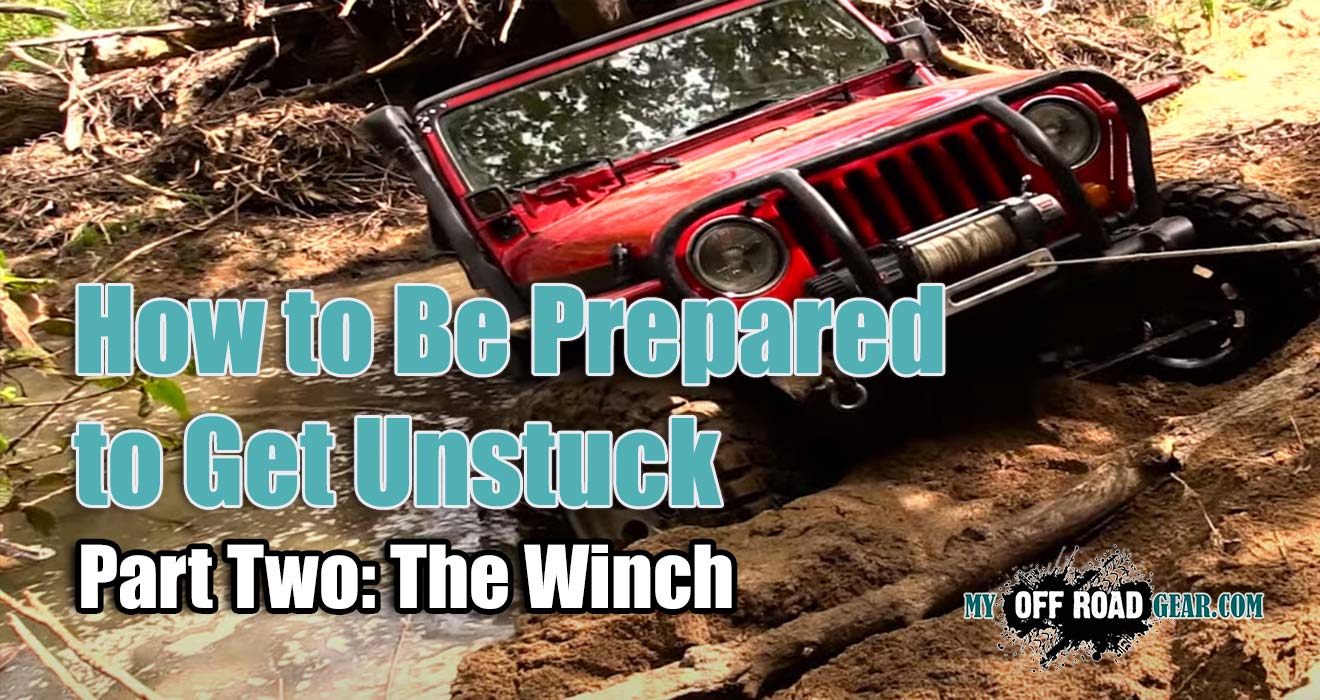
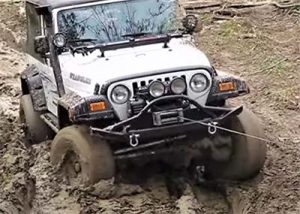
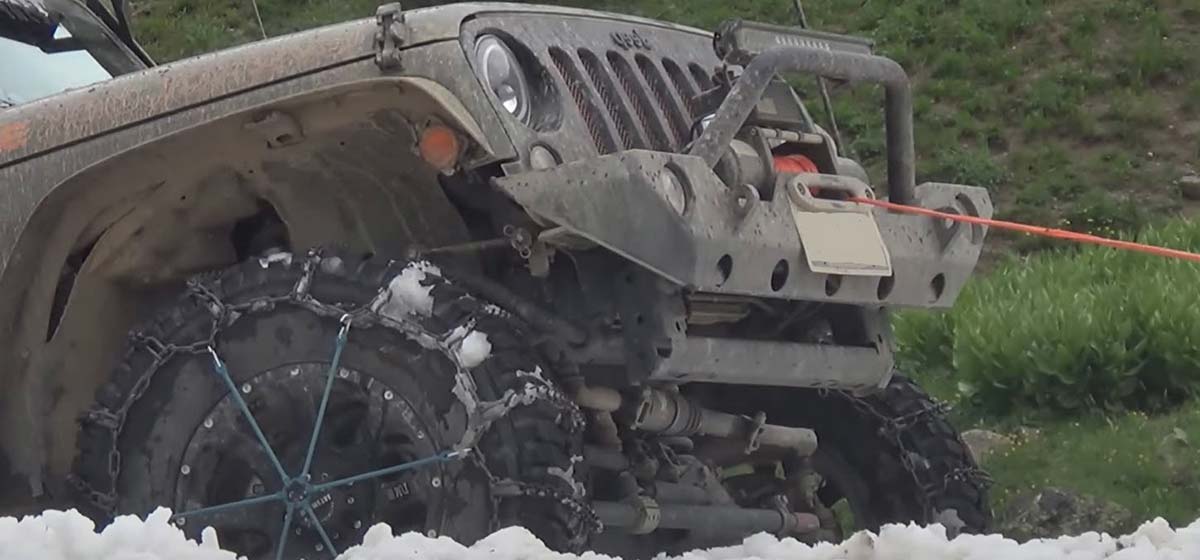
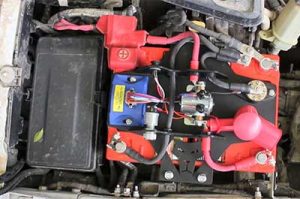
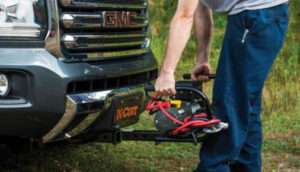
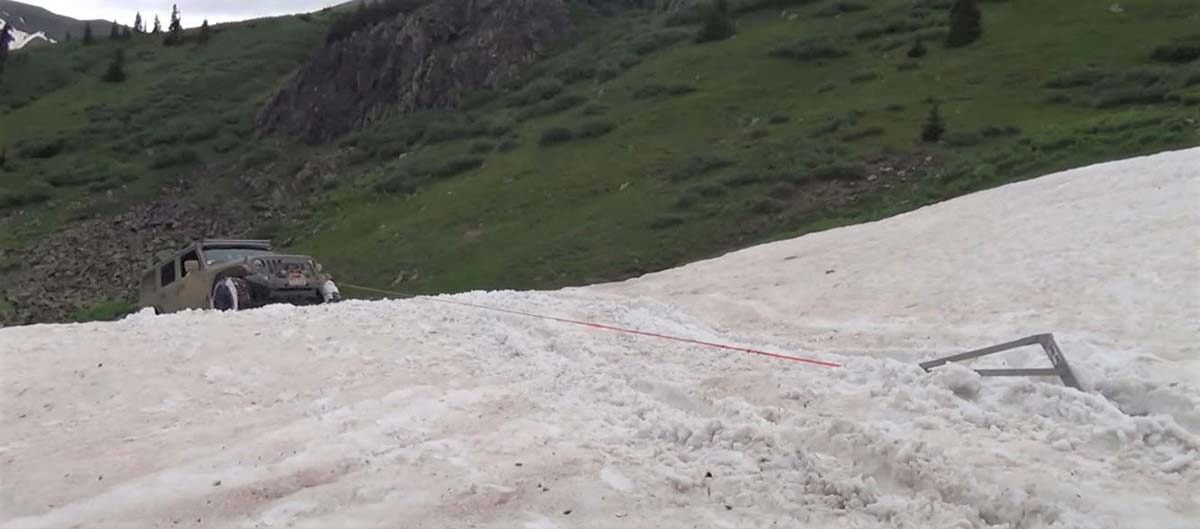
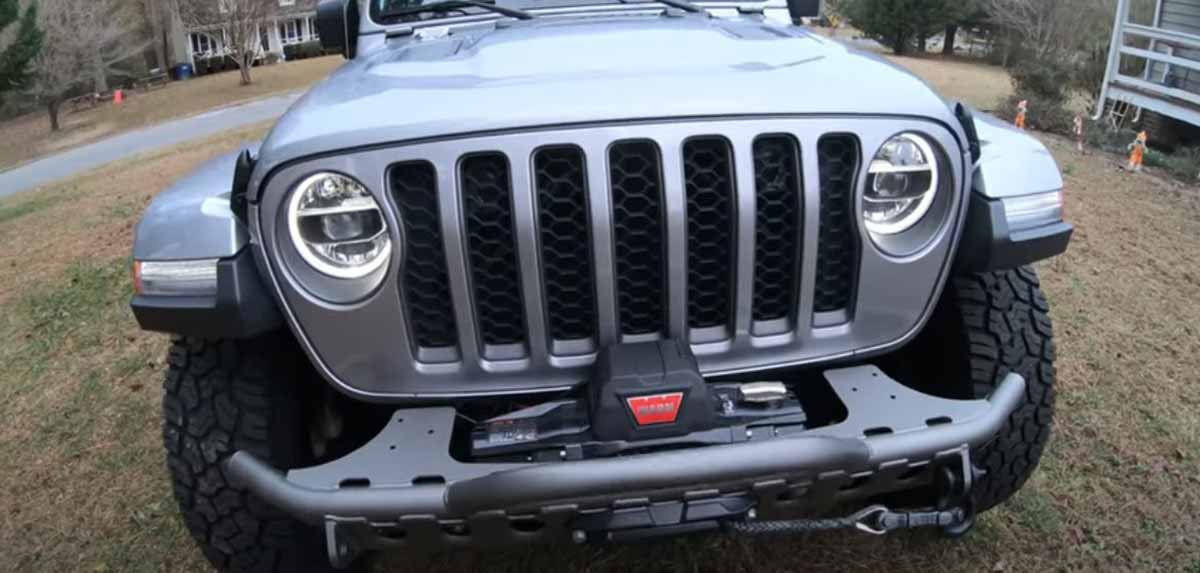
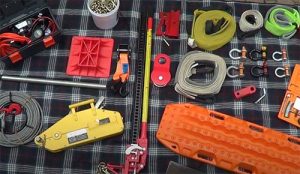
Add Comment